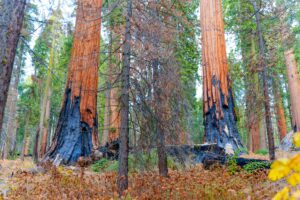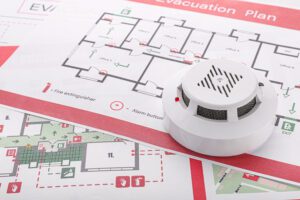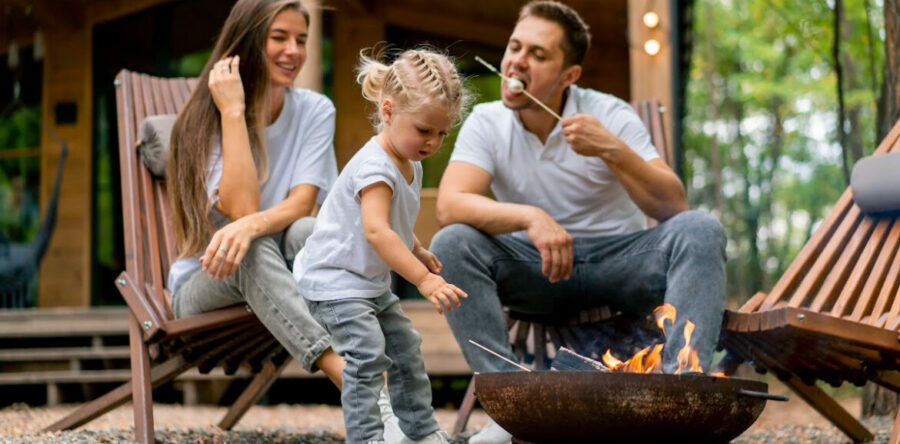Everyone is accountable for the responsible use of fire. Whether it’s at home, in the backyard with the fire pit or grill, camping with friends and family or being involved in a controlled burn, you have the responsibility to be prudent with the flames. Being conscientious with fire comes with serious obligations; protecting lives and safeguarding property. Safe fire practices are your responsibility.
Before a match is struck or that fire pit or grill ignited, assess the risks by evaluating the area. Identify fire hazards and people that might be at risk. Then, do whatever you need to in order to eliminate or control those dangers.
This article will explore the importance of fire, the dangers of mismanagement, lessons learned from catastrophic wildfires, fire prevention tips and a brief review of home emergency plans.
Fire: A Powerful Friend and a Dangerous Foe
Fire has kept us warm, cooked our food, shaped civilizations and fueled many practical innovations in society. Fire is one of mankind’s greatest discoveries and oldest tools. However, fire can also be a force of unbelievable destruction when left unchecked or mismanaged.
The devastating wildfires in California and in the western United States and Canada are a grim reminder of the double-edged nature of fire. These events highlight the necessity of responsible fire use and a deeper understanding of its role in our environment.
Understanding the Dual Nature of Fire
- The Historical Significance of Fire for Humanity
For thousands of years, fire has been essential for human survival. Early humans relied on it for survival and safety from predators. As societies advanced, fire enabled metallurgy, transportation and industrial progress. Fire continues to be a crucial energy source today by heating homes, powering vehicles and and providing processes for modern industries and manufacturing companies. - Fire’s Role in Ecosystems
Fire is a natural and necessary component of many ecosystems. Many forests, like those in the western provinces and states, have evolved to depend on periodic wildfires to regenerate plant life. Controlled burns and natural wildfires help clear dead vegetation, enrich the soil and even reduce unwanted pests. Many tree and other plant species rely on fire to release seeds and begin the germination process. But when fire is mismanaged or prevented for too long, dry vegetation can accumulate and lead to more intense, uncontrollable wildfires. This delicate balance illustrates the importance of responsible fire management. - The Dangers of Wildfires
California has experienced some of the most destructive wildfires in history, aggravated by climate change, prolonged droughts and human negligence. Fires over the past decade have burned tens of thousands of acres, destroyed entire towns and claimed many lives. These fires were fueled by dry conditions, extreme winds and an abundance of very dry and flammable vegetation and other materials. - Human Negligence and Fire-Related Disasters
 Many wildfires are caused by human activity such as unattended campfires, discarded cigarettes and power line failures. Faulty electrical equipment has been responsible for deadly fires, demonstrating how even large-scale infrastructure can contribute to fire disasters if not properly maintained. Beyond wildfires, household fires also pose significant risks. Cooking accidents, improper wood burning techniques, overloaded electrical circuits and even candle mishaps are common causes of home fires. A heightened awareness of fire safety and safe fire practices would help prevent many heartbreaks each year.
Many wildfires are caused by human activity such as unattended campfires, discarded cigarettes and power line failures. Faulty electrical equipment has been responsible for deadly fires, demonstrating how even large-scale infrastructure can contribute to fire disasters if not properly maintained. Beyond wildfires, household fires also pose significant risks. Cooking accidents, improper wood burning techniques, overloaded electrical circuits and even candle mishaps are common causes of home fires. A heightened awareness of fire safety and safe fire practices would help prevent many heartbreaks each year.
How to Use Fire Responsibly at Home & Outdoors
Prudent homeowners and landlords should keep fire extinguishers accessible, regularly assess electrical wiring, routinely inspect and clean chimneys and use fire-resistant building materials whenever possible.
Here are some essential fire prevention tips for everyone in the household to follow:
- Never leave cooking unattended.
- Use a fireplace screen to contain sparks and inspect and clean your chimney at least once a year.
- Keep flammable items away from heat sources.
- Install smoke alarms and test them regularly.
- Never leave a burning candle unattended.
Responsible fire use outdoors is equally important. When enjoying campfires and barbecues follow these guidelines:
- Build fires in designated areas with fire-resistant surroundings.
- Keep water or an extinguisher nearby.
- Fully extinguish fires before leaving.
- Always obey local fire bans and restrictions especially during dry seasons.
Fire and the Environment

In many fire-prone regions, the role of a controlled burn, sometimes called a “prescribed’ burn, will help to reduce wildfire risks by eliminating excess dry vegetation. Over the years many cultures, and today many communities, practice controlled burns to maintain healthy landscapes. Modern fire management agencies recognize and incorporate these traditional techniques into their planning.
How Mismanagement Leads to Destruction
When fire suppression policies prevent natural burns for too long, forests accumulate dangerous amounts of flammable material. This can lead to megafires, that burn hotter and longer than a traditional wildfire, making them harder to control and more damaging to ecosystems and often leading to significant property loss.
These tips to will help reduce fire hazards in communities:
- Create defensible space around homes by clearing dry brush and debris.
- Use fire-resistant landscaping.
- Advocate for local fire prevention programs and controlled burns.
- Report any perceived fire hazards or suspicious activities to the authorities.
Lessons from California Wildfires
There have been volumes written about the common mistakes that led to the wildfire devastation and loss of life in California. You might be asking, “Are there things that I can do or encourage others to do to help prevent wildfires? Is there a potentially dangerous situation that I know of, that warrants a call to local authorities?”
Here are several items that could play a significant role in reducing the future risk of destructive wildfires:
- Clear away flammable vegetation. Many properties lost in wildfires lacked proper defensible space.
- Firebreaks can help protect communities and sub-divisions and slow the spread of wildfires.
- Ignoring or delaying evacuation orders have led to tragic loss of life.
- As more homes are being built in wildfire-prone zones, urban expansion has significantly increased the risk.
- Poor power grid maintenance and aging electrical infrastructure has sparked several deadly fires.
- Careless use of smoking materials and poor open burning practices.
- Parking a vehicle on dry grass.
- Unsecured loads in a vehicle. I have a friend whose garage burned to the ground with a pickup truck and considerable personal property inside it. A semi failed to properly secure a load. A chain dragging on the pavement sparked a grass fire that spread to the garage. Thankfully, the fire department was able to save his home.
- Strict enforcement of fire safety requirements and public education campaigns.
Human Action vs. Natural Causes
While lightning strikes and dry conditions often trigger wildfires, human activity remains the leading cause. In California, nearly 90% of wildfires are linked to human behavior, from abandoned campfires to sparks from vehicles. Public awareness and proactive measures will greatly reduce these occurrences.
The Importance of Preparedness and Fire Prevention Education
California has implemented new fire-resistant building codes, stricter utility regulations and expanded emergency response strategies. But individual responsibility remains a critical component. Wildfire education, emergency planning and personal fire-safe habits all contribute to reducing fire risks.
Develop a Home Emergency Plan

A discussion about fire, whether it’s a wildfire or a home fire, would not be complete without reviewing several safe fire practices with your family and friends.
According to the U. S. Fire Administration, residents have roughly two minutes to get out of a house once a smoke alarm sounds. Another reason why is so important to quickly respond to evacuation orders in the case of a wildfire that’s out of control.
Every second counts during a fire. Tonight, would be a great time to assess fire emergency plans with your family. These should include:
- Develop and practice an emergency plan.
- Find at least two ways out of each room, especially bedrooms. A second way out of an upstairs bedroom should include an escape ladder. Make sure the kids know where it is and how to deploy it.
- Be sure that windows and doors are not blocked with furniture, clothes or other household items.
- Practice getting low and crawling to an exit in case there is a lot of smoke.
- Choose a place in front of your home to meet all members of your family.
- Practice your home emergency fire drill, particularly with younger children.
If you’re in an apartment:
- Know where the stairs and emergency exits are located.
- Leave and close the door behind you.
- Pull the fire alarm on your way out.
- Don’t use the elevator, get to the stairs.
- Gather at an outside meeting place and stay put.
- Tell the fire department if you’re aware of someone still in the building.
Respect Fire for a Safer Future
Please share this article with family, friends and co-workers to help spread fire safety awareness.
Encourage them to implement responsible fire practices at home and outdoors. And by all means, support local fire and police departments and national fire prevention initiatives.
We all know that fire is an incredibly powerful and essential force, but it demands respect and responsible use by everyone. By learning from past disasters with home and wildfires, adopting safer fire practices and promoting fire education, we can harness fire’s benefits without succumbing to its dangers.



